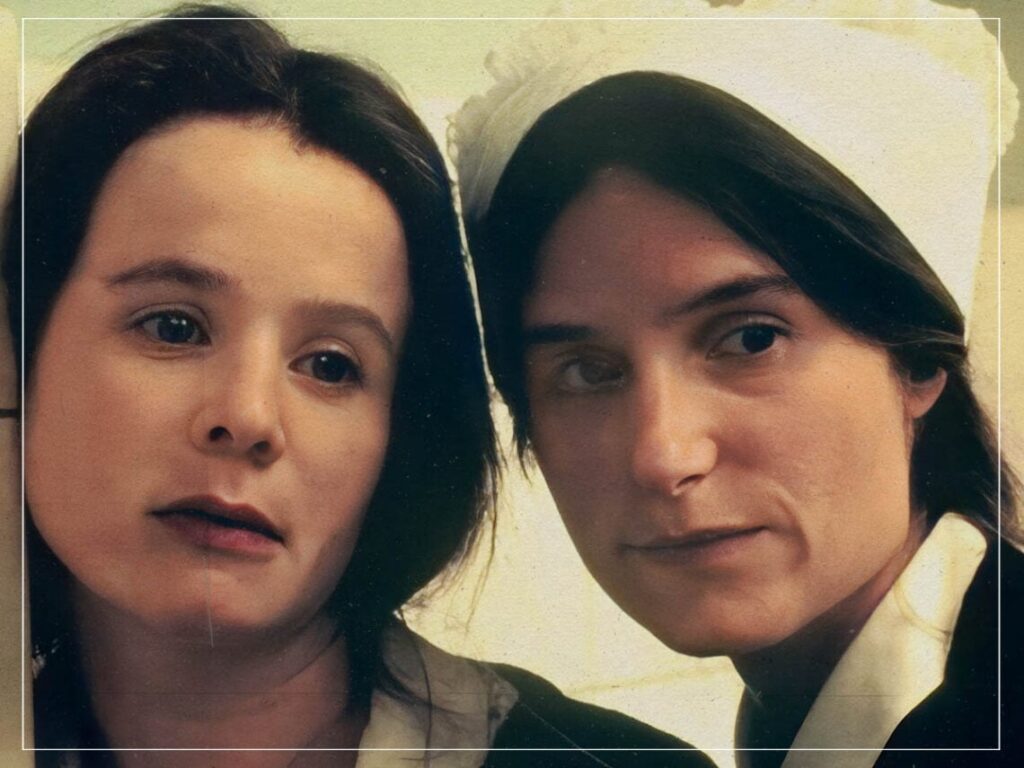The fairy tale origins of Lars von Trier’s ‘Breaking the Waves’
 Posted On
Posted On
(Credits: Far Out / Alamy)
When we think of the work of Danish filmmaker Lars von Trier, we immediately conjure up some of the most controversial moments in contemporary cinema history. With a challenging filmography that explores themes such as sexual deviancy, torture and madness, to look at a von Trier movie is to dive headfirst into the darkest corners of the human experience.
The House That Jack Built offered a somewhat sympathetic yet egregious take on the motives of a serial killer, while Nymphomaniac explored the desperation of a woman addicted to sex. Melancholia took depression as its primary theme, while Antichrist saw some of the most shocking images in 21st-century cinema.
It’s fair to say that von Trier has always been something of a provocateur and even as far back as his 1996 psychological romantic drama Breaking the Waves, it was clear that the Danish director would be providing a kind of cinema very different from most of his contemporaries, a reputation that would stay with him for much of his professional career.
Breaking the Waves tells of a strange young Calvinist woman (played by Emily Watson) who lives in the Scottish Highlands in the 1970s. After her non-religious husband (played by Stellan Skarsgard) is severely injured in an industrial accident and is unable to perform sexually, he asks her to find a lover, and while she initially resists, she accepts his request, leading to increasingly cruel sexual acts with other men.
The films of von Trier are unmistakably his own, but the director once admitted that when it came to Breaking the Waves, he had been inspired by a Danish fairytale. Speaking with the BFI, von Trier noted, “I wanted to do a film about goodness. When I was little, I had a children’s book called Golden Heart, which I have a very strong and fond memory of.”
The director continued: “It was a picture book about a little girl who went out into the woods with pieces of bread and other things in her pocket. But at the end of the book, after she’s passed through the woods, she stands naked and without anything. And the last sentence in the book was: ‘I’ll be fine anyway,’ said Golden Heart.”
Bess from Breaking the Waves is an innocent-seeming young woman who has previously had treatment for a mental illness following the death of her brother. When she meets and marries oil rig worker Jan, her childlike beliefs and behaviours are contrasted with her newfound sexual experiences, and she is caught up in their equal opposition to her faith.
Von Trier believes that the Golden Heart protagonist’s story is similar to Bess’ in how both of their characters express the “role of the martyr in its most extreme form.”
The director explained, “The story for Breaking the Waves probably has its origin there. Golden Heart is the film’s Bess.” In fact, Breaking the Waves forms part of Von Trier’s ‘Golden Heart’ trilogy along with 1998’s The Idiots and 2000’s Dancer in the Dark.
The Golden Heart tells of a poor girl who gives away all her possessions in order to help those around her and each of the films in von Trier’s trilogy focuses on a female protagonist. Though Breaking the Waves deals with serious and relatively dark themes, it finds it origin in a Danish fairytale, revealing some of von Trier’s most juvenile inspirations.
[embedded content]
Related Topics


